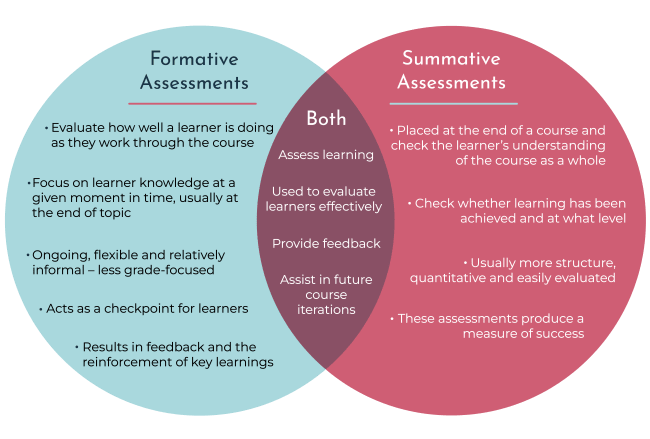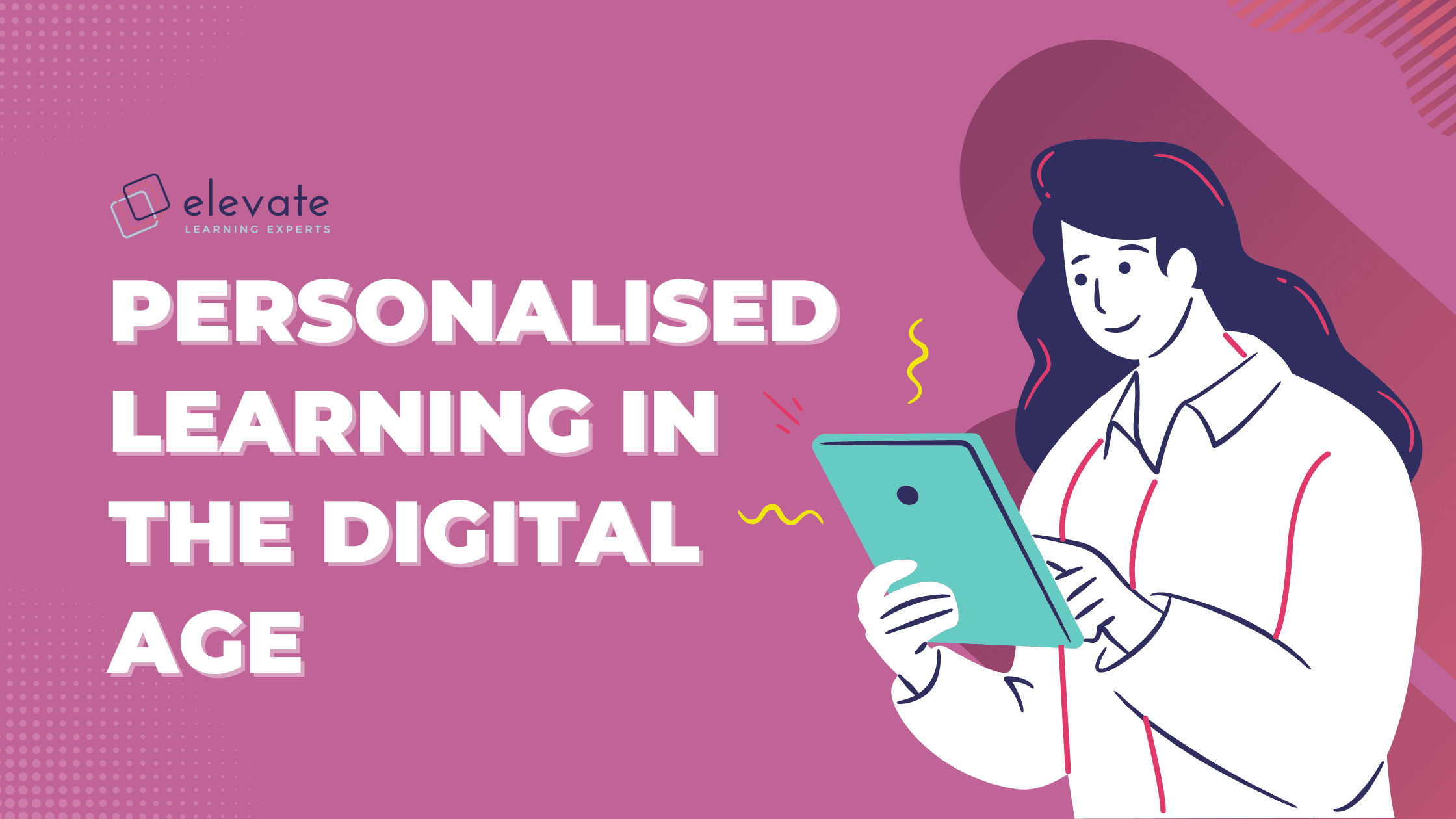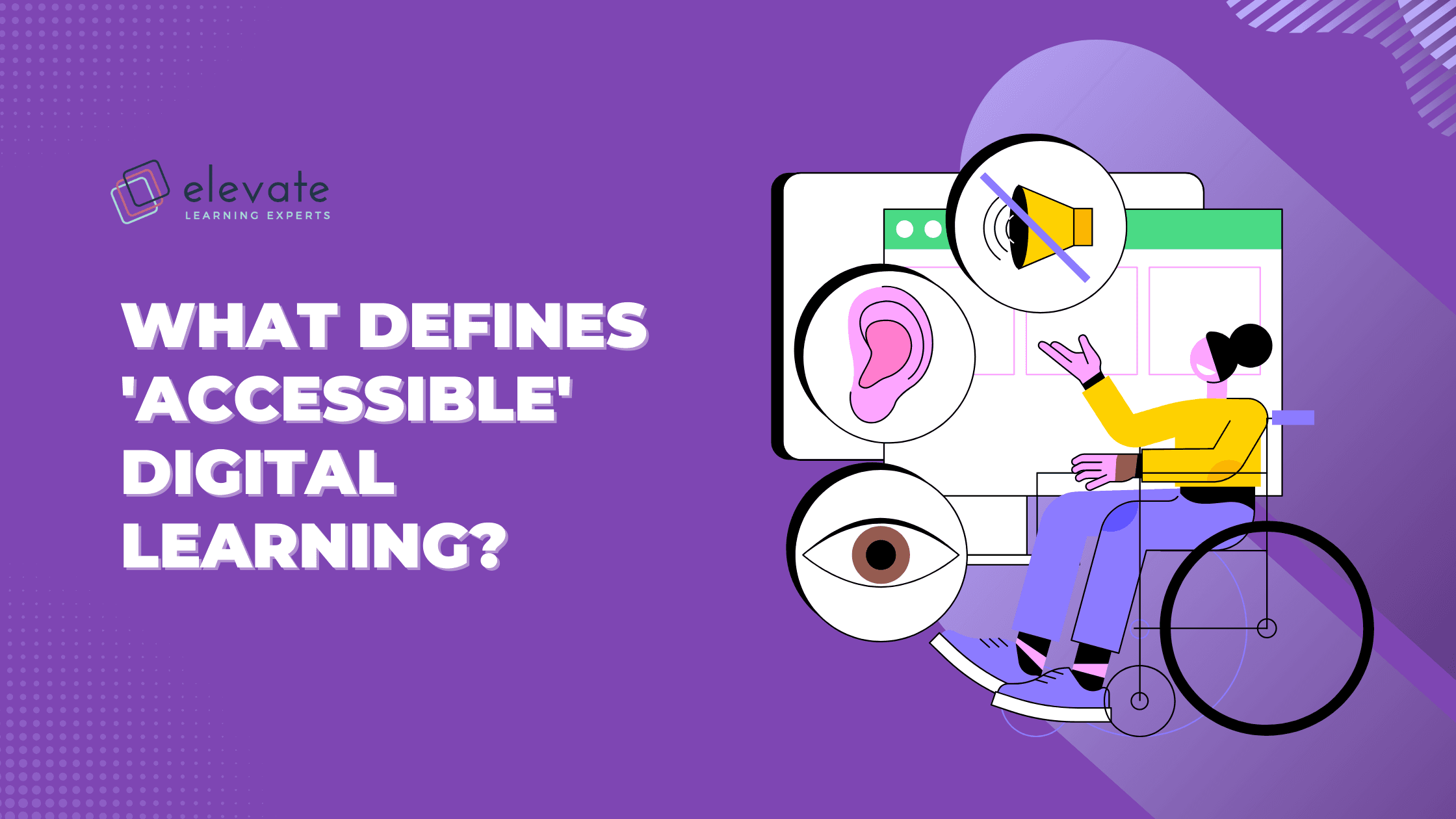“Nothing that we do to, or for, our students is more important than our assessment of their work and the feedback we give them on it. The results for our assessment influence our students for the rest of their lives and careers — fine if we get it right, but unthinkable if we get it wrong.” - Race, Brown & Smith, 2005
As we now know, digital learning has created a new medium through which engaging, relevant and impactful learning experiences can be delivered sustainably, and at scale. Learning is no longer confined to in-person learning institutions and constructions and can take place at any time and at any place, with far greater reach and accessibility than ever before.
Whether you’re working in Higher Education, in an NPO, or in a corporate setting, what would you consider to be one of the foundational learning concepts and principles across a range of industries?
While we believe that the fundamental principles required for a successful learning experience are that it must be learner-centered, goal-oriented and design-focused, being able to measure the effectiveness of the learning experience and assess whether learning transfer has taken place is key.
Assessments are therefore an essential component of the learning experience. Not only do they determine the user’s progression through the learning experience, but they can also influence and further contribute to their understanding of the content. Through carefully designed pause and reflect activities, consistent and personalised feedback, and questions that are designed to have learners practically apply key concepts, assessments can be a strategic tool for competence development and learning success.
But, for many digital learning designers, and many learners, assessments are daunting and often, anxiety-inducing.
How can you ensure that your current assessment practices are both in line with best practices and effective? Well, digital technology opens up the possibility for a more personalised, impactful, and engaging assessment experience. As teaching and learning have adapted to technological advancements, so must assessment practices and design.
Using technology for assessments has many potential benefits. It offers more choice in approach and format as learners are not constrained by their location or time. Learners also receive immediate feedback which in turn influences the connection between learner and instructor. Digital assessments could facilitate more self-evaluation and self-regulated learning through the collection of evidence, immediate feedback, and self-reflection of achievements. Furthermore, digital assessments can measure skills, knowledge and cognitive processes that were previously difficult to do.
For example, using simulations can simultaneously measure computer skills, decision making and strategy processing, providing a comprehensive understanding of a learner’s level of competence or mastery.
Given these benefits, you may be asking yourself: how can I go about creating online assessments or transferring already existing courses to online platforms in a way that is meaningful and impactful to the overall learning experience? It’s important to remember that digital learning and assessment design still needs to adhere to learning experience design best practice, in that it must consider the learner experience, the design of the assessment and the goals you’re aiming to achieve.
Whether you’re brand new to the digital learning design field, or you have plenty of digital content creation experience but are in need of inspiration when it comes to designing assessments, we’ve conducted some research into some of the best principles and practices to help you create considered, effective, and high-quality learning assessments.

Good digital assessments should be integrated into the course design to support learning, and the teaching strategies and learning outcomes must align with the assessment strategies. In other words, the course activities should allow the learner to practise the assessed knowledge and skills. This also allows learners to direct their learning as well as instructors to focus their course elements such as content selection.
Here are three steps and some questions you can ask yourself to help you better align your assessments with your learning outcomes:
Step 1: Determine what is acceptable evidence of learning
Questions to ask yourself:
- What assessment methods would best measure student learning?
- How will students demonstrate their mastery of course learning outcomes?
Step 2: Review existing course learning outcomes or write new ones
Questions to ask yourself:
- For each course learning outcome, what are students supposed to be able to do?
- If you were to ask a student to explain back to you what the learning outcome means do you think they will have the same understanding and expectations as you?
Step 3: Make the connection
Questions to ask yourself:
- What course learning outcomes will each assessment measure? How?
- Is every assessment method connected to a course learning outcome?
- Are there a variety of assessment methods throughout the course?

Whether it be in an academic setting, where assessments should relate directly to the learner’s field of interest, or in a corporate setting, where learners should be provided with the opportunity to practically apply the content and skills required to perform in their roles, a well-designed assessment targets specific skills and competencies for success.
In the end, a well-designed assessment should be practical in nature and reflect the type of activities that your learners would be doing in their field of work or industry.

Well-designed assessments keep accessibility in mind. By this, we mean that assessment design should accommodate all learners. In both face-to-face and digital learning, software and tools can be used to assist learners during an assessment period. So, what design decisions can you make to ensure that your assessments are accessible from the get-go?
Ask yourself the following questions in line with WCAG:
- Can time limits on assessments be extended for learners who require additional time?
- Can learners save their progress and return to the assessment at a later stage to complete it?
- Can a submission of a confirmation message be set? (i.e., ‘Are you sure you are ready to submit your answers?‘)
- Can learners review their answers before submitting them?
- Can learners ‘cancel’ or reverse a submission if the submit button is clicked on in error?
At Elevate Learning, we believe in championing all voices, contexts, perspectives and cultures. This flows into our pedagogical choices, which are shaped by our desire to create accessible and inclusive learning experiences. Our goal is to ensure that no one feels left behind.
This ethos is also embedded into the way we design assessments — enabling a richer learning experience for all. Assessments should embrace a wide range of differences (whether it be various physical abilities, levels of access to technology, and beyond) between learners, and the tasks and procedures should not disadvantage any individual or group.

A high-quality course will include both formative and summative assessments. Formative assessments evaluate a learner’s progress during the learning experience, while summative assessments are placed at the end of a course.
Take a look at the differences and similarities of these different assessment types in the graphic below.

A single summative assessment (also known as assessment of learning) completed at the end of a course does not allow the learner to overcome or improve on their inadequacies. They simply show what learning has occurred after some learning time. On the other hand, regular formative assessments (also known as assessment for learning) scattered throughout a course (along with meaningful feedback), provides learners with an understanding of their strengths and weaknesses. This advises and guides their learning. Therefore, course designers and instructors should include both summative and formative assessments to reap the benefits of both.
Just as in traditional classrooms or lecture halls, multiple forms of assessments can be effective in the online learning environment. The use of different assessment methods allows the learners to demonstrate their learning in a way that best suits them. As a result, learners take more ownership of their learning while still meeting the assessment outcomes.
A good example of a formative assessment might include:
- Reflecting through writing, either during learning or at the end of a course. This allows learners to look back and think about what knowledge has been gained.
- Utilising discussion boards with thoughtful prompts allows learners to engage not only with the learning material but with their peers academically.
Whereas an effective summative assessment could include:
- Analysing case studies which allows learners to apply the content, theories, and policies to specific contexts.
- The creation of informatics (visual representation of information) which assists learners to build connections, ascertain vital information, and then communicate and express it differently.
- Learners can also be assessed by creating live or pre-recorded presentations in that they get to learn from each other while developing their knowledge transference and self-expression.
- Podcasts which capture a user’s self-expression to create an audio narrative.
- E-portfolios allow learners to demonstrate their learning digitally by displaying the best examples that represent their work completed during a certain time.

All stakeholders should receive clear, accurate and consistent information relating to the assessment purpose, methods, procedures, and criteria. Assessments should be transparent to be considered fair. Learners should be provided with clear expectations indicating what is being taught, how they need to demonstrate their learning as well as the criteria used to assess them. This is more important than ever before for digital learning, as many learners are experiencing online assessments for the first time.
Here are a few examples of how to prepare your learners for various assessments:
- Formative, in-lesson question: Take some time to consolidate what you’ve just learnt in this lesson, and answer the question below.
- Formative, in-lesson reflection: Before continuing with your course content, take a few minutes to reflect on what you’ve just learnt and ponder on this reflection point…
- Summative quiz: You’ve just completed the learning portion of this course. Now it’s time to put your knowledge to the test. You will be required to achieve a minimum pass rate of 70% to consider your learning successful. You will also be given quiz attempts. If you do not manage to pass on the third attempt, reach out to support at support@institutionname.com to find out about next steps.

Meaningful and actionable feedback can influence learners’ motivation and engagement as well as encourage self-directed learning. Where possible, this feedback should be automatic such as quizzes that are graded immediately. This feedback should not merely correct the learner by providing right/wrong answers but should provide meaningful, qualitative feedback, even if it’s the same feedback regardless of the correct/incorrect answer.
In addition, video and audio feedback foster connections between instructors and learners (if utilising this option, consider additional accessibility requirements). Online discussion forums also allow for common feedback and provide opportunities for questions to be answered. As online courses may move quickly, feedback should be timely, and learners should be able to apply the feedback to upcoming assessments.
Final Thoughts
Whether you’re designing assessments for face-to-face learning environments or online learning, assessments continue to lie at the heart of any learning experience. ell-designed assessments are beneficial for all stakeholders — it highlights potential weaknesses and areas for iteration in a learning designer’s course design, provides insights for the assessors, clients or managers into the strengths and weaknesses of their learners, and highlights to learners where further improvement may be needed.
If you would like to learn more about our service offerings, or if you require assistance with your assessment design and implementation, then contact us here.
References
Bulut, S. (2019). Assessing online learners’ academic self-efficacy in a symbiotic learning environment. http://doi.org/10.2139/ssrn.3370615
Dyjur, P., Kelly, S., Eaton, S., & Grant K, (n.d). Learning Module: Designing Online Assessments. University of Calgary. https://taylorinstitute.ucalgary.ca/resources/module/designing-online-asses
Kundra, P., Kurdi, M., Mehrotra, S., Jahan, N., Kiran, S., & Vadhanan, P. (2022). Newer teaching-learning methods and assessment modules in anaesthesia education. Indian Journal of Anaesthesia, 66(1), 47.
Landers, R. N., & Sanchez, D. R. (2022). Game‐based, gamified, and gamefully designed assessments for employee selection: Definitions, distinctions, design, and validation. International Journal of Selection and Assessment, 30(1), 1-13.
Oldfield, A., Broadfoot, P., Sutherland, R., &Timmis, S. (n.d) Assessment in a Digital Age: A research review. Graduate School of Education, University of Bristol. https://www.bristol.ac.uk/media-library/sites/education/documents/researchreview.pdf
Principles of Assessment Design. (2022). Warwick: Academic Development Centre. https://warwick.ac.uk/fac/cross_fac/academic-development/assessmentdesign/assessmentdesignprinciples/#:~:text=In%20short%2C%20inclusive%20assessment%20shares,feedback%20is%20individualised%20and%20effective.
Race, P., Brown, S., & Smith. B. (2005) 500 Tips on Assessment. Abingdon: Routledge Falmer
Walker, D. (2007). Principles of Good Online Assessment Design. https://ewds.strath.ac.uk/reap/reap07/Portals/2/CSL/feast%20of%20case%20studies/Principles_of_good_online_assessment_design.pdf

